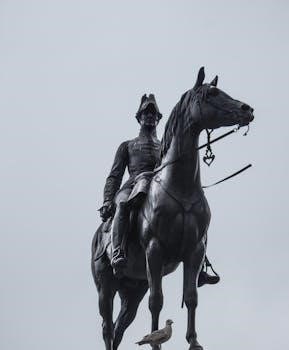Overview of “The Pigeon Finds a Hot Dog”
Mo Willems’ “The Pigeon Finds a Hot Dog” is a children’s picture book where the Pigeon discovers a hot dog. A sly duckling appears, wanting a bite, leading to a humorous conflict about sharing. It’s a story about navigating wants and needs.
Book’s Premise and Plot
The story centers on the Pigeon’s discovery of a delicious hot dog, which he eagerly anticipates eating all by himself. However, a persistent duckling enters the scene, expressing interest in the hot dog and questioning its nature. This sets up a conflict where the Pigeon grapples with his desire to keep the hot dog versus the possibility of sharing, leading to humorous negotiations and internal debates as he considers his options and the duckling’s persistence.

Characters in the Story
The primary characters are the Pigeon, who finds a hot dog and wants to eat it, and a sly, persistent duckling who wants a share. These two drive the narrative.
The Pigeon
The Pigeon, a recurring character in Mo Willems’ books, is portrayed as a determined and somewhat selfish bird. In this story, he’s initially hesitant but quickly becomes possessive of the hot dog. He displays a range of emotions, from excitement to frustration, as he tries to keep the treat for himself. His expressive behavior is central to the story’s humor and appeal to young readers, showing his strong desire.
The Duckling
The Duckling is depicted as a small, persistent, and somewhat sly character. Unlike the Pigeon’s direct approach, the duckling uses clever questioning and subtle manipulation to get what he wants. His constant inquiries about the hot dog, such as “Is that a hot dog?”, highlight his desire for a piece. He embodies the behavior of a younger sibling, using curiosity and persistence as his tools to get a share. The duckling is portrayed as very cute.
Key Themes Explored
The book explores themes of sharing and cooperation as the Pigeon learns to share with the Duckling. It also delves into dealing with wants and needs through the Pigeon’s initial reluctance to share his hot dog.
Sharing and Cooperation
The story emphasizes the importance of sharing, as the Pigeon initially resists but eventually shares his hot dog with the persistent duckling. It highlights how cooperation can lead to a positive outcome, even when there is initial reluctance. The book subtly teaches children about social dynamics and the benefits of not being selfish, making sharing a central theme within the narrative. The Pigeon’s eventual act of sharing promotes a sense of community and understanding.
Dealing with Wants and Needs
The narrative explores the conflict between the Pigeon’s desire to devour the entire hot dog and the duckling’s need for a taste. The Pigeon’s initial reluctance showcases the common struggle with wanting something all for oneself, while the duckling’s persistence highlights the need for fairness. This dynamic helps young readers understand the difference between immediate wants and the needs of others, promoting empathy and thoughtful decision-making about personal desires and social responsibility.
Artistic and Narrative Style
Mo Willems uses his signature simple illustrations and speech bubbles. The narration is humorous and engaging, drawing young readers in. The story uses simple language to convey complex emotions.
Mo Willems’ Distinctive Illustration Style
Mo Willems’ illustrations in “The Pigeon Finds a Hot Dog” are characterized by their minimalist approach. He uses simple lines and shapes to create expressive characters, particularly the Pigeon. The backgrounds are often plain, drawing the reader’s attention to the character’s emotions and actions. This style enhances the story’s humor and accessibility for young children. The characters are easily recognizable and relatable.
Humorous and Engaging Narration
The narration in “The Pigeon Finds a Hot Dog” is known for its humor and direct address to the reader. Mo Willems uses simple language and repetition, which is appealing to young audiences. The Pigeon’s dramatic internal monologues and expressions add to the comedic effect. The duckling’s persistent questioning also creates a humorous dynamic, making the story very engaging and fun for children to follow along with.

Educational Value and Target Audience
This book is designed for young children, focusing on reading skills and comprehension. It also explores social dynamics, such as sharing and cooperation, in a relatable and humorous way for its intended audience.
Reading Skills and Comprehension
The book’s simple language and repetitive phrases aid in developing early reading skills. The straightforward narrative structure helps young readers follow the plot easily, improving their comprehension. The dialogue-driven story engages children and encourages them to actively participate in the reading experience, enhancing their understanding of the story’s progression and character interactions.
Understanding Social Dynamics
This story presents a relatable scenario of conflict over a desired object, enabling children to explore basic social dynamics. The interaction between the Pigeon and the Duckling demonstrates the challenges of sharing and negotiation. It offers a starting point for discussions about empathy, how to handle disagreements, and the importance of considering others’ perspectives, all while being grounded in a lighthearted narrative.
Reception and Critical Acclaim
The book has garnered positive reviews and is popular among children and educators. Its humor and relatable characters contribute to its success, making it a well-loved story in early childhood education.
Positive Reviews and Awards
While specific awards for “The Pigeon Finds a Hot Dog” aren’t explicitly mentioned in the provided text, the book is part of a series by Mo Willems, a three-time Caldecott Honoree. It receives praise for its humor, engaging narrative, and relatable characters. The book’s popularity among children and educators indicates its positive reception in the literary community, contributing to its overall success as a beloved children’s book.
Popularity Among Children and Educators
The book’s simple yet engaging narrative, coupled with Mo Willems’ distinctive style, makes “The Pigeon Finds a Hot Dog” highly popular with children. Educators appreciate its ability to spark discussions about sharing, wants, and needs, while also fostering reading comprehension. The relatable behaviors of the characters also contribute to its appeal, making it a favorite for storytime sessions and early childhood education settings.
Adaptations and Related Works
The book has an animated version narrated by Mo and Trixie Willems. It is also part of the larger Pigeon series by Mo Willems, which includes other popular titles.
Animated Version of the Book
An animated adaptation of “The Pigeon Finds a Hot Dog” brings the story to life with visuals and sound. Narrated by Mo Willems and Trixie Willems, the animation enhances the humor and expressions of the Pigeon and the Duckling. Pete List animated the story, which adds another layer of engagement for young viewers, making the narrative accessible and entertaining, capturing the book’s essence.
Other Books in the Pigeon Series
The Pigeon’s adventures extend beyond the hot dog incident. The series includes titles like “Don’t Let the Pigeon Drive the Bus!” and “Don’t Let the Pigeon Stay Up Late!” These stories feature the same expressive pigeon in humorous situations, dealing with desires and limitations. The series, created by Mo Willems, explores childhood themes with relatable scenarios and encourages interactive reading, making them popular among children and educators.

Pigeon’s Behavior Analysis
The Pigeon initially shows hesitancy, carefully investigating the hot dog with head-bobbing movements. This cautious approach transitions into an eagerness to consume it, showcasing typical appetitive responses. His behavior is relatable.
Initial Hesitancy and Investigation
Upon encountering the hot dog, the Pigeon doesn’t immediately devour it. Instead, he exhibits a period of initial hesitation, carefully assessing the situation. He employs his characteristic head-bobbing behavior, examining the object from multiple angles. This cautious approach also involves subtle movements indicating an olfactory investigation, suggesting he’s using his sense of smell to understand what he has found before committing to eating it.
Appetitive Responses
Once the Pigeon has investigated, his appetitive responses are triggered. The desire to consume the hot dog becomes strong, and he can hardly wait to “shove the entire thing in his beak.” This eagerness is a key part of the story, illustrating the intensity of his initial desire to possess and enjoy the hot dog entirely for himself, before the duckling’s arrival changes things.

Hot Dog as a Symbol
The hot dog in the story symbolizes a coveted object, representing desire and temptation. It serves as a catalyst for exploring themes of sharing, selfishness, and the complexities of wanting something.
The Significance of the Hot Dog
The hot dog is central to the story, acting as a highly desirable object that triggers the pigeon’s initial possessiveness. It’s a simple, yet powerful symbol of temptation, instantly capturing the pigeon’s attention and driving the narrative forward. This seemingly ordinary food item becomes the focal point of the pigeon’s internal conflict and his interaction with the duckling, highlighting themes of sharing and desire. The hot dog’s allure is universal, making the story relatable to young readers.
Symbolism of Food and Desire
In “The Pigeon Finds a Hot Dog,” food, specifically the hot dog, represents more than just sustenance; it embodies desire and the struggle between wanting and having. The pigeon’s immediate urge to devour the hot dog symbolizes the primal, often selfish, aspect of desire. The duckling’s longing for a piece highlights how desire can be contagious, sparking a conflict that explores the complexities of sharing and resisting temptation. This creates a relatable scenario for children experiencing similar emotions.
Reader Engagement and Activities
Post-reading, discussions about sharing and the hot dog’s taste encourage critical thinking. Craft activities, like creating a hot dog from popsicle sticks, provide creative engagement with the story’s themes.
Post-Reading Questions and Discussions
After reading “The Pigeon Finds a Hot Dog,” engage children with questions like, “How did the Pigeon feel when the Duckling wanted a bite?” and “Why did the Pigeon eventually share?” Discuss what a hot dog tastes like and if the duckling has tried one. Explore the concepts of sharing, temptation, and cleverness, prompting kids to relate these themes to their own experiences with wants and needs, fostering critical thinking and empathy.
Craft Activities Related to the Story
Engage children with craft activities such as creating popsicle stick hot dogs, decorating them with felt or paper toppings. Another idea could be making pigeon masks using paper plates and feathers. Encourage kids to draw their own versions of the pigeon and duckling, or design their own silly hot dog creations. These hands-on activities will enhance their engagement with the story while developing fine motor skills and creativity.
Impact on Children’s Literature
This book contributes to early childhood education by teaching social skills through a humorous narrative; The Pigeon’s lasting popularity demonstrates its effectiveness in engaging young readers. It is an important contribution to children’s literature.
Contribution to Early Childhood Education
“The Pigeon Finds a Hot Dog” significantly contributes to early childhood education by providing a relatable scenario about sharing and negotiation. The book’s simple language and engaging illustrations aid in early literacy development. It also offers a platform to discuss social dynamics, like dealing with desires and the importance of considering others, all within an amusing and lighthearted context that resonates with young children.
The Pigeon’s Lasting Popularity
The Pigeon’s enduring popularity stems from its relatable portrayal of childhood desires and frustrations, resonating with both children and adults. The character’s expressive nature and humorous antics, especially in situations like the hot dog dilemma, make the books highly engaging. This popularity is further amplified by the series’ simple yet effective narrative style, making it a staple in early childhood literature and classrooms worldwide.

Leave a Reply
You must be logged in to post a comment.